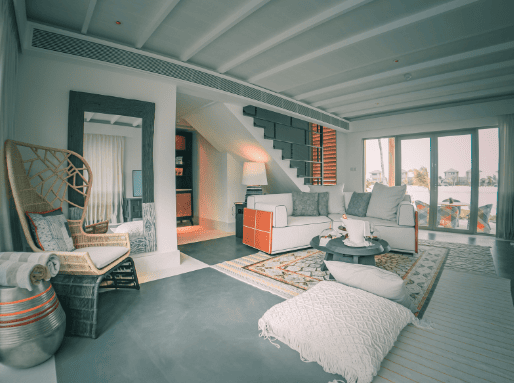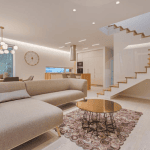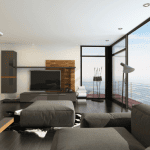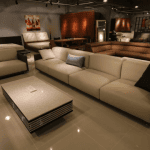
Imagine a world where your surroundings can magically shift your mood and feelings. That’s the realm of furniture and interior design, where every chair, table, or wall color can tell a story and evoke emotions. It’s not just about aesthetics; it’s about creating an environment that reflects and influences our emotions. Just like a captivating book transports you to another world, the right choice of furniture and design can transform your mood and feelings.
The Emotional Echo of Furniture
Furniture is more than just objects we use; they are extensions of our personality. A cozy armchair isn’t just a seating option; it’s a haven of comfort, an escape from the day’s hustle. Similarly, a well-organized bookshelf can reflect a mind that loves order and knowledge. The furniture we choose to surround ourselves with can be a reflection of our inner selves, offering comfort, inspiration, or even a sense of order.
The Symphony of Colors
Colors play a vital role in setting the emotional tone of a space. Imagine a room bathed in soft greens and blues, invoking a sense of calm and serenity, reminiscent of a peaceful day at the beach. In contrast, vibrant hues like reds and oranges can energize and stimulate, perfect for spaces where creativity and activity bloom. Choosing colors for our spaces is akin to selecting a background score for our lives, setting the rhythm and mood for our daily experiences.
The Narrative of Shapes and Patterns
Shapes and patterns in design are silent storytellers. Circular tables and curved sofas foster a sense of unity and inclusivity, encouraging conversation and interaction. Geometric patterns can create a sense of order and precision, while abstract designs might inspire creativity and out-of-the-box thinking. These elements add layers to the story of our spaces, enriching the narrative with their silent, visual language.
Choreographing Space
Space planning in interior design is like choreographing a ballet. It’s about creating a flow that allows for movement and harmony. A cluttered room can feel chaotic, overwhelming our senses, while a well-arranged space can provide clarity and calm. It’s about finding the right balance, ensuring each piece of furniture and décor has its place and purpose.

Illuminating Lives with Light
Lighting in a room can dramatically alter its ambiance. Soft, warm lighting can create a cozy, intimate atmosphere, ideal for relaxing and unwinding. Bright, natural light can invigorate and energize, making a space feel alive and vibrant. Lighting is the unsung hero of design, capable of transforming the mood of a room with just a flick of a switch.
The Tactile Tales of Texture
Textures bring an additional layer of sensory experience to our spaces. A plush, soft carpet underfoot can make a room feel more inviting, while sleek, smooth surfaces can impart a modern, minimalist vibe. Textures can evoke memories and emotions, connecting us to our spaces in a deeply personal way.
Personalization: The Signature of Self
The most powerful aspect of interior design is personalization. It’s about infusing our spaces with elements that tell our unique stories. Be it family heirlooms, travel souvenirs, or artwork, these personal touches turn a house into a home. They are the chapters of our life, displayed proudly, adding depth and meaning to our environment.

The Influence of Historical and Cultural Elements
Furniture and design are not just about current trends; they’re deeply rooted in history and culture. A vintage Victorian sofa or a minimalist Japanese-inspired table brings with it a story from another time and place, influencing the ambiance of a room. These elements can evoke feelings of nostalgia, wonder, or provide a sense of connection to our heritage or other cultures.
Ergonomics: Comfort Beyond Aesthetics
The ergonomic design of furniture goes beyond mere appearance, focusing on creating comfortable and healthy environments. Furniture that supports the body correctly can influence our well-being, productivity, and even our mood. Ergonomically designed workspaces can reduce fatigue and discomfort, leading to a happier, more efficient lifestyle.
Conclusion
The psychology of furniture and interior design is a fascinating exploration of how our physical surroundings impact our emotional well-being. It’s a dance between form and function, color and texture, light and space, all coming together to create a symphony of experiences that enrich our daily lives. So, next time you choose a piece of furniture or decide on a room’s color palette, remember you’re not just designing a space; you’re sculpting your emotional landscape. Embrace the power of design to create environments that resonate with your story, your emotions, and your dreams.





